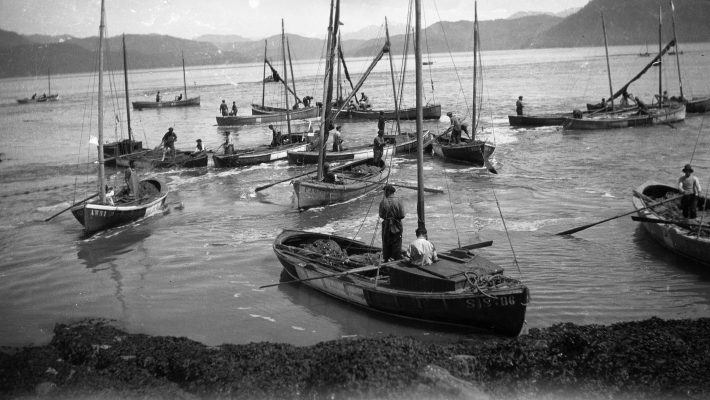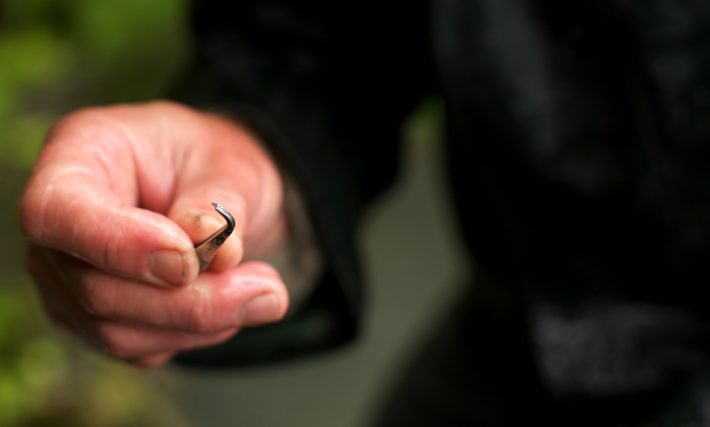Century-old salmon scales show historical decline in population diversity
Simon Fraser University press release.
New research reconstructs historical abundance and diversity of populations of sockeye salmon using modern genetic tools on 100 year old scales and finds large population diversity declines over the last century. The findings are published in Journal of Applied Ecology.

Researchers drawing on 100 year-old sources of salmon data report that recent numbers of wild adult sockeye salmon returning to the Skeena River – Canada’s second largest salmon watershed – are 69% lower than during historical times. Research undertaken by Simon Fraser University (SFU) and Fisheries and Oceans Canada, published today in the Journal of Applied Ecology, further reveals that population diversity in the Skeena watershed has similarly declined by 70% over the last century.
The research team applied modern genetic tools to sockeye salmon scales collected from commercial fisheries during 1913-1947 to reconstruct historical abundance and diversity of populations for comparison with recent information.

The analyses reveal that the Skeena watershed once hosted a diverse sockeye salmon portfolio, composed of many populations that fluctuated from year to year. Some populations increased while others decreased, yet the overall number of fish returning to the watershed remained relatively stable. This stability sustained commercial fisheries, Indigenous communities, and ecosystems throughout the watershed.
However, the Skeena sockeye portfolio has largely eroded over the last century, such that it now is dominated by a single population that is primarily supported by artificial production from spawning channels.
Our study provides a rare example of the extent of erosion of within-species biodiversity over the last century of human influence
– says Michael Price, an SFU PhD candidate and lead author. “That loss in abundance and diversity from wild populations has reduced the provisioning of salmon to local ecosystems and Indigenous fisheries throughout the watershed.”
Life-cycle diversity also has shifted: populations are migrating from freshwater at an earlier age, and spending more time in the ocean.
“Rebuilding a diversity of abundant wild populations – that is, maintaining functioning portfolios – should help ensure that watershed complexes like the Skeena are robust to global change”, says John Reynolds, co-author, SFU professor, and Tom Buell BC Leadership Chair in Aquatic Conservation.
Price and Reynolds say that their research can help inform status evaluations and rebuilding plan discussions for depleted salmon populations by expanding our understanding of historical diversity and production potential.
You can read the article in full for free (for a limited time) here:
https://besjournals.onlinelibrary.wiley.com/doi/10.1111/1365-2664.13835
Media contacts:
Michael Price, SFU Biological Sciences, 604-842-4409, mhprice@sfu.ca
John Reynolds, SFU Biological Sciences, 778.782.5636, reynolds@sfu.ca
Melissa Shaw, SFU Communications and Marketing, 236.880.3297, melissa_shaw@sfu.ca
Like what we stand for?
Support our mission and help develop the next generation of ecologists by donating to the British Ecological Society.